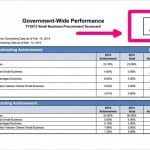
As you might have predicted, the monetary situation of personal businesses have modifiedconsiderably over the last twelve years, because the u . s . skilled the cease of a housing growth; aeconomic crisis that nearly took down Wall road; the inner most financial downturn because the greatdepression; and 5 years of one of the u . s .’s weakest economic recoveries. however you is probablysurprised to learn the way those financials have shifted. The adjustments aren’t all as one would possiblyhave predicted.
allow’s start with the plain. internet income margins at private companies have recovered regularlybecause the give up of the splendid Recession. the usage of its proprietary database of economicstatements of extra than one hundred,000 personal agencies with much less than $10 million in yearlysales, monetary statistics issuer Sageworks found that profit margins at personal businessesaccelerated from a low of 3.2 percentage in 2009 to a excessive of eight.5 percent in 2014.
at the same time as enhancing earnings margins themselves aren’t sudden, the power of the restorationis. Sageworks information show that profit margins at personal groups with less than $10 million inincome are currently some distance better than the 5-to-six percentage variety they occupied in the latter years of the housing boom and before the high-quality Recession.
personal corporations had been lowering their reliance on debt in current years. Sageworks reports that the debt-equity ratio of personal American businesses with income of much less than $10 millionchanged into 2.8 in 2014, its lowest stage for the reason that before the first rate Recession.furthermore, this low debt-equity ratio is present across different length classes of small agencies, Sageworks facts reveal.
The timing of the deleveraging is sudden. After plateauing at or near 3.1 for 5 years, the debt-equity ratio for all non-public organizations with much less than $10 million in sales first started out to say no in 2012, Sageworks figures imply. moreover, the contemporary debt-fairness ratio remains high via historicstandards, exceeding the level in any year from 2002 to 2006, whilst the financial system was growinggradually.
The ratio of debt to earnings earlier than hobby, taxes, depreciation, and amortization (EBITDA), has been declining when you consider that 2010 and is presently 5.6, Sageworks numbers indicate. The downwardfashion is gift for companies with sales under $1 million; people with sales of $1 million to $5 million; and those with sales of $five to $10 million. This fashion probable displays progressed earnings at personalbusinesses greater than reduced borrowing at the ones companies.
non-public agencies still have tons greater long time debt than they did in the years before the brilliantRecession. throughout the years of the housing boom, the ratio of long term liabilities to property rose from 24.2 percentage in 2002 to 31.1 percent in 2006, Sageworks’ evaluation suggests. distinctly, the ratio oflong term debt to property endured to rise all through the monetary disaster and first-rate Recession, hitting 38.6 percent in 2010. It then remained regular for 3 years, earlier than starting to come down in 2012, reaching 32.five percent in 2014.
The maximum surprising trend has been closer to accelerated brief–term borrowing. In 2002, quick time period debt comprised a minuscule zero.05 percentage of assets at non-public corporations, Sageworks figures display. The ratio has risen progressively during the last 12 years, and now stands at 1.ninepercent. even as this fraction is not large in absolute phrases, its continual upward trend and consistencyacross enterprise sectors and commercial enterprise size training is sudden. (The ratio of brief time period to long–term debt has also increased dramatically – from 0.21 percentage in 2002 to two.74percentage in 2014 – indicating that the effect lies in modifications on the liabilities aspect of the balancesheet.) It’s no longer clean whether or not this fashion marks a trade in the options of privatecommercial enterprise for shorter term debt or whether or not its get right of entry to to quick term debt has stepped forward quicker than its get right of entry to to longer horizon borrowing.




